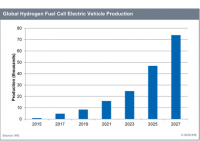Hydrogen Compression: Difference between revisions
Jump to navigation
Jump to search
(Added some more information) |
|||
| (19 intermediate revisions by 2 users not shown) | |||
| Line 17: | Line 17: | ||
=Hydrogen Generator= | =Hydrogen Generator= | ||
*See [[Electrolyzer]] | |||
* | |||
=Demonstration Hydrogen Houses= | =Demonstration Hydrogen Houses= | ||
| Line 61: | Line 42: | ||
*Cost approximately $1M each. OSE could fund these from proceeds of programmatic revenue in locations of [[OSE Campuses]]. | *Cost approximately $1M each. OSE could fund these from proceeds of programmatic revenue in locations of [[OSE Campuses]]. | ||
= | =Internal Links= | ||
*20 | *[[20 Hydrogen Myths (Whitepaper)]] | ||
*[[Solar Hydrogen Production]] | |||
* | *[[Hydrogen Production]] | ||
* | |||
= | =External Links= | ||
* | *[https://www.energy.gov/eere/fuelcells/hydrogen-and-fuel-cell-technologies-office Office of Energy Efficiency and Renewable Energy] | ||
[[Category: Biofuel]] [[Category: Energy]] [[Category: Hydrogen]] | |||
Latest revision as of 23:26, 1 August 2021
OSE Position
OSE proposes a robust economy based on water lubricated internal combustion engines running on hydrogen as a solution for distributed power production - available today using current technology with no new innovation needed outside of social innovation towards acceptance of the possibility.
Info
- Hydrogen Station Compression and Costs from NREL - [1]. Concludes cost of compression, storage, and
- Diaphragm compressor - for hydrogen - [2]
- Piston compressors provide high volume. Easier to do than diaphragm compressors. No need for ultra purity in hydrogen engines. [3]
Low Pressure Storage
- Low pressure hydrogen storage - [4] - NJ demo house.
Companies
- Pure Energy Centre - [5]
Hydrogen Cylinders
- 2000 PSI - 194 cu f (5.5 cu m) [6]
Hydrogen Generator
- See Electrolyzer
Demonstration Hydrogen Houses
- Hopewell Project - NJ - [7]. AKA Hydrogen House - [8]
- Scientific American - Oh, only $500k for the off-grid home - [9]
Hydrogen Engines
- https://en.wikipedia.org/wiki/Hydrogen_internal_combustion_engine_vehicle
- Improving the ICE for hydrogen use - [10]
Fuel Cells
- Fuel cell types overview - [11]
- 1kW costs $5k - [12]
- 400W for 8.5k Euro [13]
- $60/W - [14]
- 11k fuel cell cars exist already worldwide, half of them being in California - [15]
- From [16] -

Efficiency and Lifetime
- Efficiency from electrolysis back to electricity in fuel cells is 45% with fuel cells - p. 11 - [17]
- Lifetime of PEM FC is only 2k-4k hours in cars, and 40k in stationary applications. Major issues with longevity! [18]
Fueling Stations
- Cost approximately $1M each. OSE could fund these from proceeds of programmatic revenue in locations of OSE Campuses.